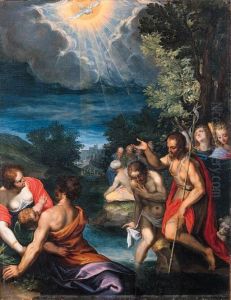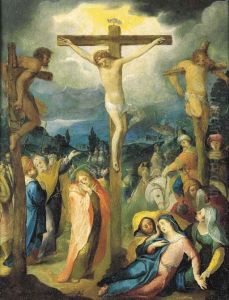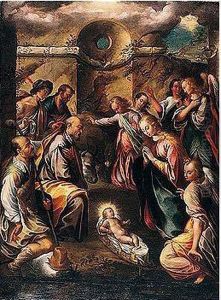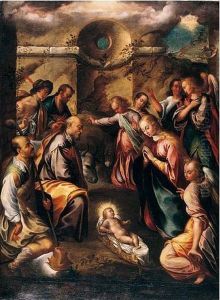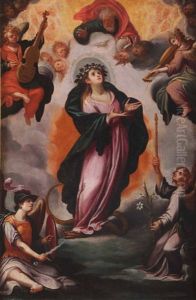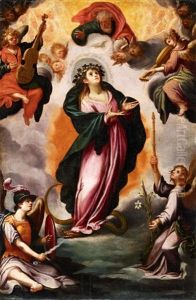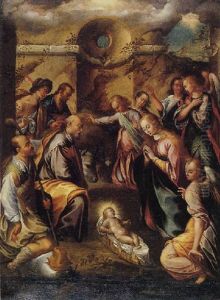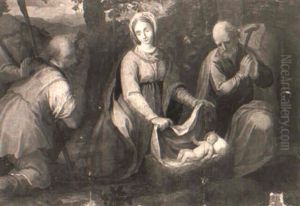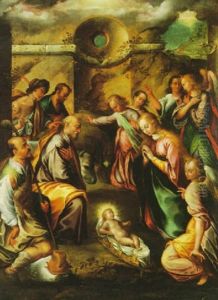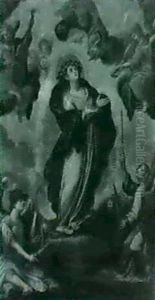Girolamo Imparato Paintings
Girolamo Imparato was an Italian painter born in 1550 in Naples, Italy. He belonged to the late Renaissance period and was known for his contributions to the Mannerist style, which was characterized by artificiality, grace, and elegance that often eschewed the balance and harmony found in High Renaissance art. His father, Francesco Imparato, was also a painter, though not as well-known as his son, and it is believed that Girolamo initially learned the craft from him.
Imparato's work was primarily influenced by the schools of Raphael and Michelangelo, as well as by contemporary Mannerist artists. However, despite these influences, he developed his own distinct style, which often involved a strong use of chiaroscuro (the contrast of light and dark in art) and dynamic compositions. Throughout his career, Girolamo Imparato specialized in religious subjects, and he created numerous altarpieces and frescoes for churches in and around Naples. His paintings often depicted scenes from the life of Christ, the Virgin Mary, and various saints.
One of his most notable works is the altarpiece 'The Martyrdom of St. Januarius' in the Cathedral of Naples, which showcases his ability to create dramatic and emotionally compelling scenes. Imparato's other works can be found in various Neapolitan churches and in the collections of art connoisseurs of his time.
Despite his local success, Girolamo Imparato did not gain the widespread fame of some of his contemporaries. His works were mostly recognized within the Neapolitan artistic community and by local patrons. Nevertheless, his contributions to the Mannerist movement in Naples were significant, and his paintings are considered important examples of the style in the region.
Imparato's artistic legacy continued through his son, Francesco Imparato, who was also a painter. Girolamo Imparato passed away in 1621 in Naples. Although not as widely known as other Mannerist artists, his works still offer valuable insight into the religious and artistic culture of late Renaissance Naples.
